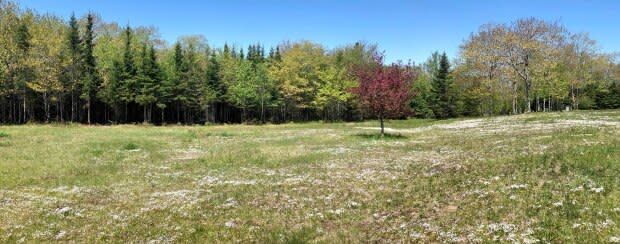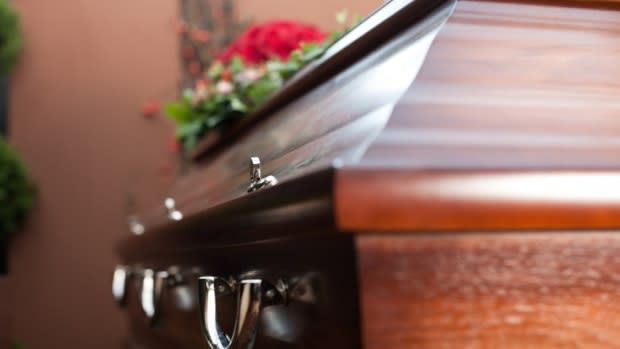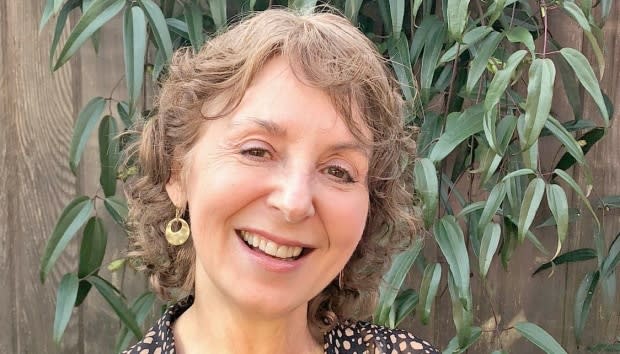Going green: Why some are 'letting nature do its thing' when it comes to burials
When it comes to choosing a final resting place, some advocates want people to skip the varnished casket — and think outside the box.
For Dawn Carson, the less that goes underground with you, the better.
"There is a way for us to give back to the earth in our last act rather than to further deteriorate it or to pollute it," said Carson, chair of Green Burial Nova Scotia.
The Ecology Action Centre working group is attempting to create more green burial options throughout the province to minimize the environmental impact of conventional North American burial practices.
"We're trying to encourage landowners to develop green burial sites, or cemetery owners to convert over to green burial sites," said Carson.
"Then, on the other side, we're trying to educate the public to ask funeral directors and cemetery owners about green burials and whether it's available, and if they could do that."
'Letting nature do its thing'
Carson said a conventional burial often involves "digging a deep grave, lining it with concrete, putting in a steel-lined casket which typically would contain an embalmed body, and the wood to make the casket is usually some sort of exotic foreign wood."
"All of that gets buried in the ground for no particular reason," said Carson. "It's not necessary to do all of that.
"That practice keeps the body from breaking down for decades as opposed to ... letting nature do its thing."
Aside from what's going into the ground, the process of manufacturing and transporting caskets and headstones can also leave an ecological footprint.

A green burial, meanwhile, allows the body to decompose as naturally as possible and aims to cut back on man-made products.
Eco-friendly burials typically involve skipping the embalming process and choosing a shroud, or a simple coffin.
Cremation is also a no-no for those looking to have a green burial. While it may save some underground space, the Ecology Action Centre says a single cremation uses as much energy as an 800-kilometre car trip.
Hybrid cemeteries
Nova Scotia doesn't have any fully-green cemeteries, but some graveyards are adopting green burials.
The province is home to three "hybrid cemeteries" offering both conventional and green burials: Pleasant Hill Cemetery in Lower Sackville, the Burlington Cemetery in Burlington and the Sunrise Park Inter-Faith Cemetery in Hatchet Lake.

Wayne Hatcher, who owns the Sunrise Park cemetery, began hearing about green burials several years ago. With encouragement from the Ecology Action Centre, he decided to dedicate 600 plots of the 15-acre cemetery to the cause last year.
"I truly believe in green burials," said Hatcher, adding that he plans to go out the green way.
"I was going to be cremated, but because of the environment[al] impact with cremation, I decided now that I'm going to be wrapped in a shroud."
The park is certified as a green burial provider by the Green Burial Society of Canada.
The site has trees, wildflowers and birdhouses. Grave markers are made of granite stones from the cemetery, but people can choose to plant a tree or flowers to act as a more natural marker.
"It's not like just going into an open field," he said.

Hatcher said he's had plenty of interest about green burials since he began doing them.
But that interest isn't necessarily making its way into funeral homes.
Patrick Curry, a funeral director and the acting president of the Funeral Service Association of Nova Scotia, said he and the other association board members haven't been getting a lot of questions on the topic.
"You get occasional curiosity about green burials, what they are, what you can do, what you can't do, that kind of thing," he said.
"But on a day-to-day basis, truthfully, we do not have a lot of people asking to choose a green-burial path for their final disposition."
A green burial tends to cost less than a conventional one. There are no mahogany caskets or ornate headstones.
While this may mean less money going to funeral homes if green funerals become more common, Curry doesn't see it as a big issue.
"Of course, [funeral homes] are businesses and, you know, we have to keep the lights on and pay our taxes, just like every other business," he said. "But … as markets shift you adapt to that market."
This could mean funeral homes having fewer embalmers and keeping a smaller inventory of caskets, he said.
Environmental impact
Curry also noted there is little evidence to support that conventional burial practices, specifically the use of formaldehyde, have a negative impact on groundwater and soil.
A 1992 report from Ontario's Ministry of the Environment, Conservation and Parks said analysis of groundwater samples collected from the wells of six cemeteries "indicated that cemeteries are not a significant source of groundwater contamination by formaldehyde."
Other contaminants, though, like metals used to make coffins, could potentially pose an environmental risk.
In 2000, researchers tested soil from a large cemetery in Northwest Ohio and found zinc, copper, lead and iron. They also found increased levels of arsenic, which "indicate[s] contamination from embalming fluids or wood preservatives."

Back to the earth
Regardless of the environmental impact, there's still something to be gained from opting for a green burial, according to Catriona Hearn, one of the founding members and current president of the Green Burial Society of Canada.
"I really see the fact that we come from the earth and go back to the earth as something really beautiful," she said from Vancouver.
"Truly, the concept of resting in peace is really completely compatible with green burial."
A big piece of the movement is getting more people on board with just learning how to think and talk about death — a topic that Hearn said "no one wants to talk about."
But she said having open, compassionate conversations about the realities and inevitability of death can help people figure out what they really want when the time comes.
"I think what we need to do is be more mindful about how our values are translated right through our death and disposition," she said.

Some might see expensive caskets and headstones as a sign of respect or honour for the deceased, but Hearn said fancier isn't necessarily better.
"Not to be unkind, but to be honest with you, it's worked for the funeral industry to push people to spend a lot of money on a beautiful casket, all the bells and whistles," she said.
"It may be something that makes you feel like you're being more respectful, but you have to ask yourself, is this really what the person, the deceased, would've wanted? Would they want you to spend $10,000 on a casket? Would this align with their environmental values?"
Curry, meanwhile, said it's good for people to have options. When meeting with clients, he said he tells them they need to balance their wishes with their family's needs "because once you're gone these are the people that have to go through the grieving process."
"I think ... a natural burial is very appropriate for certain people, and in that case I think it's excellent," he said.
"But it's not for everybody. And that's why these discussions have to take place."
MORE TOP STORIES


